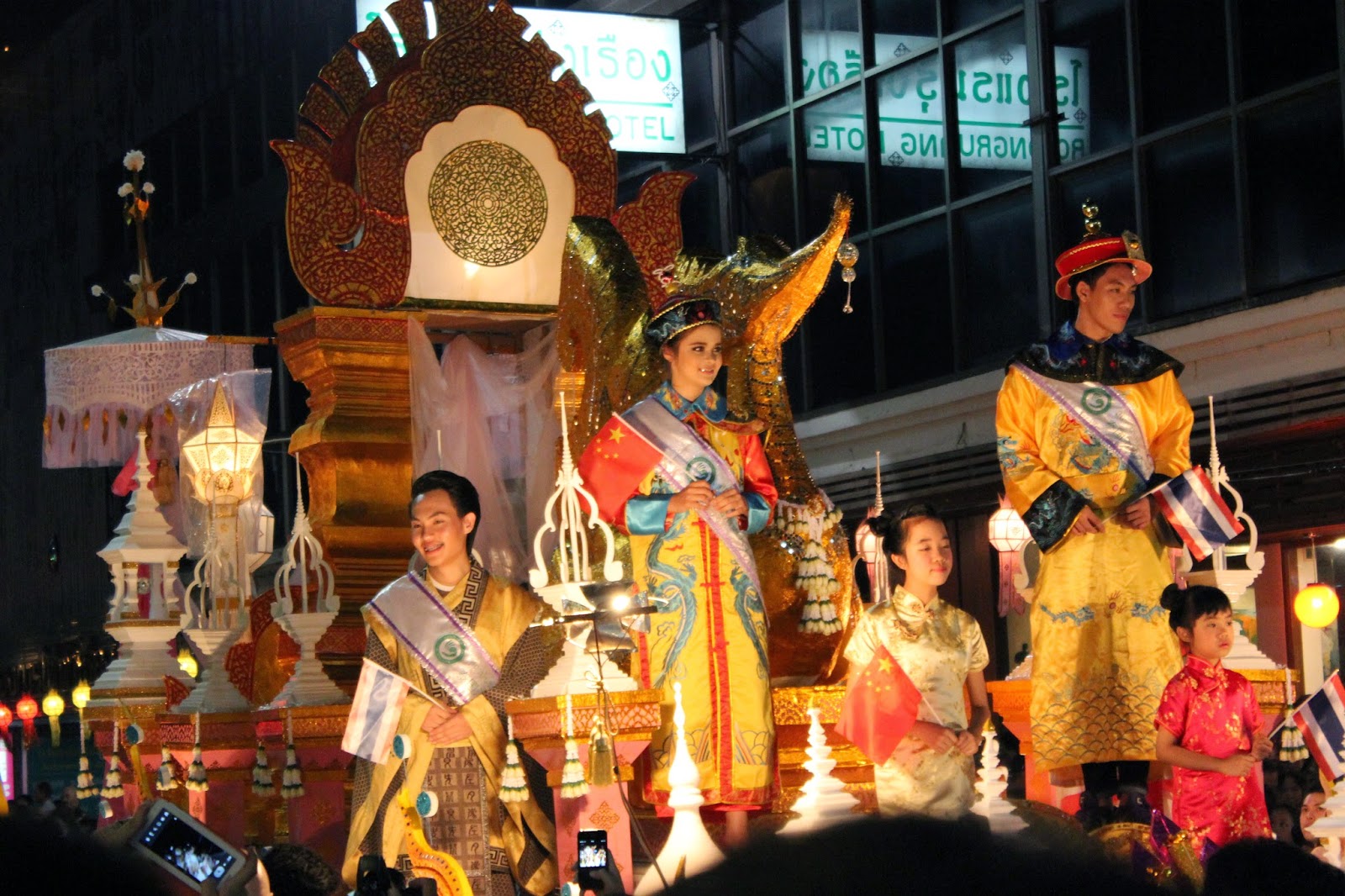Loy Krathong is a festival celebrated annually throughout Thailand. The name could be translated as "to float a basket" and comes from the tradition of making krathong or buoyant, decorated baskets, which are then floated on a river.
We visited Chiangmai from 3 to 7 November 2014 to witness the celebration which was held on a grand scale.
There was a nightly procession for 3 consecutive nights from 5 November. Every evening, the participation of floats and performance groups were different.
A festival worth looking up because here you see no barriers in terms of nationality or races. Local people and people from all over the global come together to be part of it.
Loi Krathong takes place on the evening of the full moon of the 12th month in the traditional Thai lunar calendar. In the Western calendar this usually falls in November.
On the night of the full moon, Thais launch their krathong on a river, canal or a pond, making a wish as they do so. The festival may originate from an ancient ritual paying respect to the water spirits.
Government offices, corporations and other organizations launch large decorated krathongs. There are competitions for the best such krathong. A beauty contest is a regular feature and fireworks have become common in recent years.




Loi Krathong is often claimed to have begun in the Sukhothai by a court lady named Nopphamat. However, it is now known that the Nopphamat tale comes from a poem written in the early Bangkok period. According to H.M. King Rama IV, writing in 1863, it was a Brahmanical festival that was adapted by Thai Buddhists in Thailand to honor Buddha, Prince Siddhartha Gautama. The candle venerates the Buddha with light, while the krathong's floating symbolizes letting go of all one's hatred, anger and defilements. People sometime cut their fingernails or hair and place the clippings on the krathong as a symbol of letting go of past transgressions and negative thoughts. Many ordinary Thai use the krathong to thank the Goddess of Water, Phra Mae Khongkha.
The beauty contests that accompany the festival are known as "Nopphamat Queen Contests". According to legend, Nang Nopphamat was a consort of the 13th century Sukhothai King Sri Indraditya (who is also known as Phra Ruang) and she had been the first to float a decorated raft. However, this is a new story which was invented during the first part of the 19th century. There is no evidence that a Nang Nopphamat ever existed. Instead, it is a matter of fact that a woman of this name was the leading character of a novel released at the end of the reign of King Rama III, around 1850 CE. Her character was written as guidance for all women who wished to become civil servants.
Loi Krathong coincides with the Lanna (northern Thai) festival known as Yi Peng. Yi means "two" and peng means a "full moon day". Yi Peng refers to the full moon day in the second month according to the Lanna lunar calendar (the twelfth month according to the Thai lunar calendar).
Swarms of Lanna-style sky lanterns (khom loi), literally means "floating lanterns" are launched into the air where they resemble large shoals of giant fluorescent jellyfish gracefully floating through the sky. The festival is meant as a
Khom loi are made from a thin fabric such as rice paper stretched over a bamboo or wire frame to which a candle or fuel cell is attached. When the fuel cell is lit, the resulting hot air is trapped inside the lantern and creates enough lift for the khom loi to float up into the sky.


Because they are a hazard to passing aircraft and "...can cause damage to important places in the areas such as the Grand Palace, temples and governmental offices,..." khom loi are increasingly subject to governmental restrictions. In Bangkok in 2014, revellers are prohibited from launching floating lanterns in all event areas from 18:00 on 6 November to 05:00 the next day.
Violators may face execution or a life sentence or serve a lighter sentence of 5 to 10 years in prison if damages are minor. Offenders are also guilty of violating Section 232 of the Criminal Code and that alone carries a sentence of 6 to 7 years in prison and a fine up to 1,000 to 14,000 THB. Wonder if Chiangmai is affected by this regulation.
During the festival, people also decorate their houses, gardens and temples with khom fai, intricately shaped paper lanterns which take on different forms. Khom thue are lanterns which are carried around hanging from a stick, khom khwaen are the hanging lanterns and khom pariwat which are placed at temples and which revolve due to the heat of the candle inside.
The most elaborate Yi Peng celebrations can be seen in Chiang Mai, the ancient capital of the former Lanna kingdom, where now both Loi Krathong and Yi Peng are celebrated at the same time resulting in lights floating on the waters, lights hanging from trees/buildings or standing on walls, and lights floating in the sky. The tradition of Yi Peng was also adopted by certain parts of Laos during the 16th century.
Reference from Wikipedia





























No comments:
Post a Comment